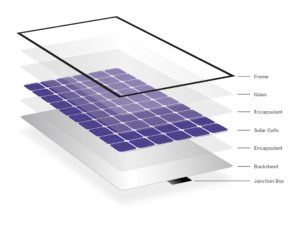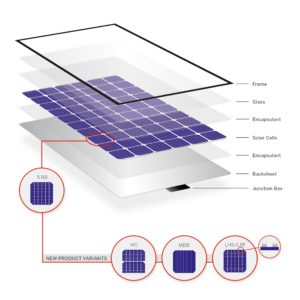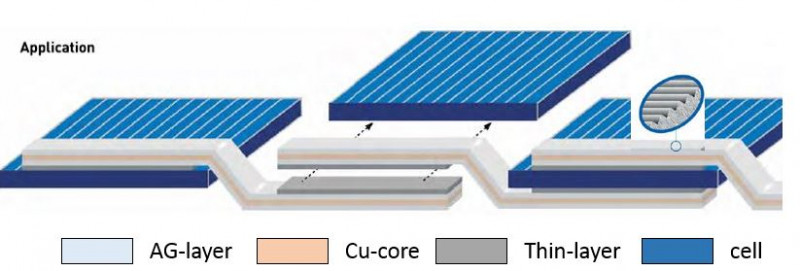 The terms Light Harvesting Strings (LHS), half-cut (HC) cells and multi-busbar (MBB) are constantly appearing in the current discussion on photovoltaic modules. They promise higher yields and higher efficiencies. Our guest author René Schüler explains what this is all about.
The terms Light Harvesting Strings (LHS), half-cut (HC) cells and multi-busbar (MBB) are constantly appearing in the current discussion on photovoltaic modules. They promise higher yields and higher efficiencies. Our guest author René Schüler explains what this is all about.
Light Harvesting Strings (LHS)
Conventional standard ribbons will block the sunlight by covering the active cell areas. With the use of the LHS the special groove/pyramid structure will leads to the effect, that the incoming light will be reflected as shown in the image gallery below and will increase the amount of light which can reach the active cell areas. Based on the point that up to 80% of this blocked sunlight can be regained an efficiency gain on module level of up to 3 % – depending on module and cell configuration – could be theoretically possible with the LHS technology. LHS provides:
- Lower cell resistance
- Increased light capture by the cells
- Improved efficiency and reliability
- No additional processing steps necessary – one soldering step
 Half-cut (HC) cells
Half-cut (HC) cells
Half-cut means that modules consist of 120 smaller instead of 60 larger cells. In a traditional silicon cell-based PV module, the ribbons interconnecting neighboring cells can cause a significant loss of power during the current transport. Cutting solar cells in half has been proven to be an effective way to lower resistive power loss. Modules like the IBC PolySol 280HC-MS with this technology provide:
- Reduced resistance = reduced power loss
- Higher fill factor = better energy yield (~ +0.5-1%)
- ~1,5 %- 2,5 % power increase (in % range because cell eff. and types are different)
- Lower string current and lower NMOT
- Better shading performance
Multi-busbar (MBB)
MBB means that a solar cell is equipped with 12 or 16 busbars instead of 4, 5 or 6. This means the modules provide a higher power output and a higher reliability:
- ~2 % – 2,5 % power increase (in % range because cell eff. and types are different)
- Shorter „transportation path“ for current
- High reflectance wire design with less shading
- Mechanical load performance increased
- Risk of micro crack decreased
Benefits for installers and owners of PV systems
How do installers and owners benefit from the new cell technologies? Actually, it’s all about the PV system’s performance. A higher power output of a module based on new cell technologies and with costs relatively similar to traditional modules, speeds up ROI (return on invest). This makes modules based on new cell technologies a good choice for everyone who want a quicker return on their investment and the highest system performance possible. Smart solar solutions, such as LHS, HC or multi-busbar technology therefore contribute to lower energy costs while simultaneously improving system performance.
Image gallery:

Very good technology
I love this. Quite innovative.